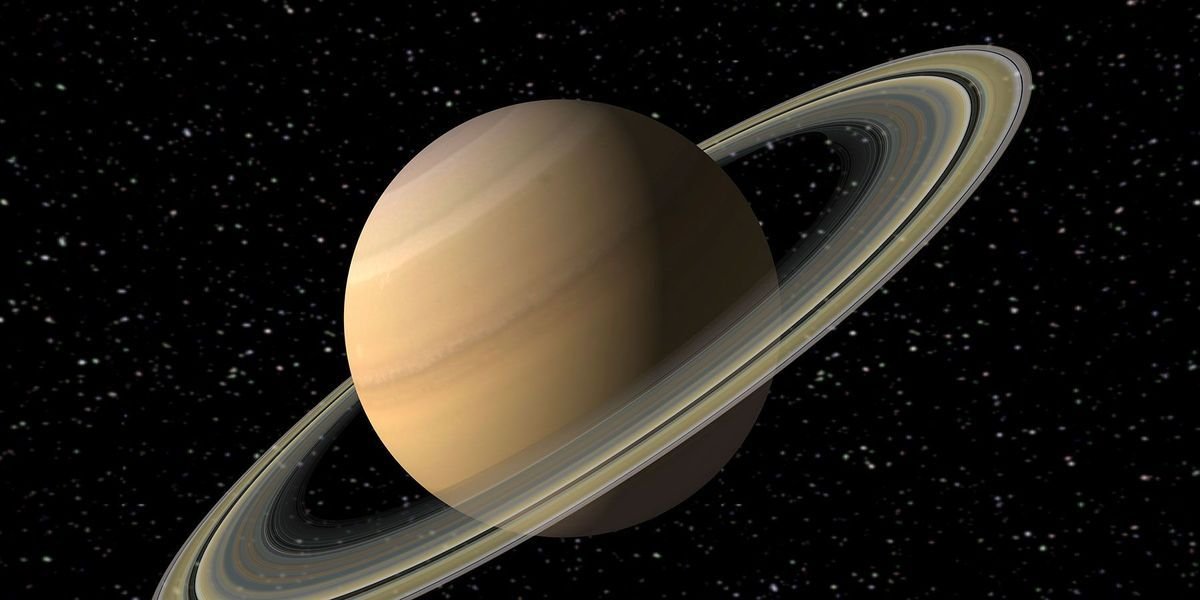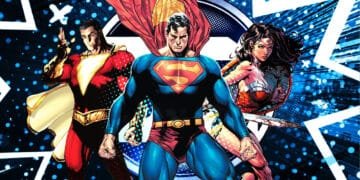Saturn is the sixth planet from the Sun and our solar system’s second-largest planet. Saturn is one of the planets with the most magnificent ringlets, with thousands of them. Saturn is not the only planet with rings, which are made up of ice and rock pieces, but none are as magnificent or complex as Saturn’s. It has the most impressive ring system, with seven rings and various gaps and splits between them. In this article, we are going to discuss some of the most interesting facts about Saturn.
Saturn, like Jupiter, is a huge gas giant consisting primarily of hydrogen and helium. Saturn is perhaps the most well-known of all the planets in our solar system, with a strong presence in pop media. The “Cthulhu Mythos,” “WALL-E,” “2001: A Space Odyssey,” “Star Trek,” “Dead Space 2,” and “Final Fantasy VII” all use it as a setting for science fiction books, movies, TV episodes, comics, and video games.
A dusty, imaginary Saturn is populated by huge sandworms in Tim Burton’s film “Beetlejuice.” The wormhole that allows astronauts to travel to another galaxy appears around Saturn in the 2014 film “Interstellar.” The word Saturday originated from the word Saturn. Let’s dig deeper and find out the most interesting facts about Saturn.
Take a look at our list of the 30 interesting facts about Saturn:

1. Nearly 1,600 Saturns could fit inside the Sun.
2. The planet Saturn is named after the Roman god of farming, Saturn, who was also the father of the Roman god Jupiter. The planet’s symbol is a sickle, a tool that belonged to the Roman god of harvest and was also the weapon Cronos used to castrate and depose his father, Uranus.
3. A day on Earth is 24 hours. A day on Saturn is 10 hours 39 minutes.
4. Because Saturn is so far from the Sun, the Sun would appear 10 times smaller viewed from Saturn than it does from Earth. On average, Earth receives 90 times more sunlight than Saturn.
5. As Saturn has a very low density, if you were able to put it into the water, it would float!
6. In early 2010, amateur astronomers spotted a massive ammonia blizzard raging on Saturn. The monster storm is five times larger than “Snowmageddon,” the snowstorm that shut down Washington D.C. in February 2010.
7. Astronomer Richard Walker discovered Saturn’s moon, Epimetheus, on December 18, 1966.
8. Saturn rotates so fast (6,200 miles per hour) that the planet bulges at its equator and its poles are flat. It is the flattest (oblate) planet in the solar system. In fact, Saturn rotates faster than any other planet except for Jupiter.
9. Saturn’s moon Titan is the second-largest moon in the solar system. Only Jupiter’s moon Ganymede (named after one of Zeus’ lovers) is larger. Titan is even bigger than Mercury
10. Traveling to Saturn by car at 70 miles (117 km.) per hour would take 1,292 years when Saturn is closest to Earth. It would take 1,595 years when Saturn is at its farthest
11. Saturn is about 75% hydrogen and 25% helium with minor traces of water, methane, and ammonia.
12. Saturn’s composition together with its atmosphere influences its color, giving it a brownish-yellow appearance.
13. Galileo was the first to observe Saturn with a telescope in 1610. He thought the rings looked like “ears” and were “handles” or moons. In a secret anagram to his scientist friend Kepler, He wrote that he had discovered the “highest planet” was “triple-bodied.”
14. Saturn is the lightest planet in our solar system.
15. The atmospheric pressure on Saturn is over 100 times greater than the Earth’s atmospheric pressure. The pressure is so powerful that it squeezes gas into a liquid. It would crush any human-made spacecraft.

16. Because Saturn spins on a tilt, it has seasons. Summer on Saturn lasts about eight Earth years.
17. Saturn has 64 known moons orbiting it.
18. Saturn’s rings are made from billions of chunks of rock and ice, ranging in size from a grain of sand to pieces as large as a house. They have a mysterious reddish “contaminant” that might be rust or the same organic material found in red vegetables on Earth.
19. Saturn is the second-largest planet in our solar system after Jupiter, which is about 20% larger than Saturn.
20. Saturn’s winds can blow up to 1,100 miles per hour, which makes it the windiest planet in our solar system.
21. The temperature on Saturn’s upper atmosphere is on average at around -175 degrees Celsius / -285 degrees Fahrenheit. This is quite cold for a gas giant at least. However, below its clouds, it gets considerably hotter.
22. Saturn’s rings seem to disappear about every 14 years. Scientists believe that the rings seem to disappear when Saturn is tilted directly in line with Earth.
23. Saturn is the most oblate planet in the Solar System. Its equatorial diameter is greater than the planet’s polar diameter. If you look at Saturn through a telescope, it would appear flattened.
24. Planets move more slowly the farther they are away from the Sun, so Saturn’s average velocity of 6 miles (9.64 km.) per second seems much slower than Earth’s 18.5 miles (30 km.) per second.
25. Today, the word “saturnine” means gloomy, sullen, or sluggish, most likely in reference to Saturn, one of the planets with the slowest motion.
26. Saturn’s nearest moon takes just 12 hours to circle the planet. Its farthest moon takes more than three Earth years.
27. Because Saturn is so far from the Sun, the Sun would appear 10 times smaller viewed from Saturn than it does from Earth. On average, Earth receives 90 times more sunlight than Saturn.
28. A year on Earth is 365.256 days. A year on Saturn is 10,759.22 days.
29. Storms on Saturn can last for months or even years. A long-lived 2004 storm on Saturn, named the “Dragon Storm,” created mega-lightning 1,000 times more powerful than lightning on Earth.
30. The spacecraft Cassini studied Saturn for about 13 years. After it completed its mission, it was intentionally vaporized in Saturn’s atmosphere in 2017.
There are many other planets with rings but none of them are as beautiful as Saturn. It is magnificent and the lightest planet in our solar system. Some of the most interesting facts about Saturn are mentioned above. We hope you find this article helpful. Please leave your feedback in the comment section below. Also, tell us about your favorite planet.
Also Checkout: 10 Amazing Facts about Moon you didn’t know














